I have said time and again – a stroll on the wild side often throws up surprises. Here I was, sitting in front of a very interesting spider web with admiration for the little genius. The web was very delicate and exquisitely crafted.
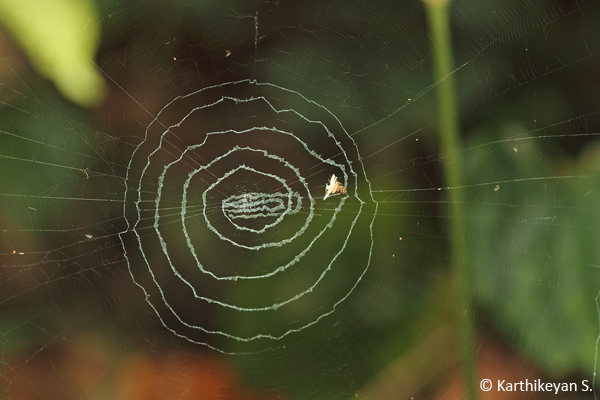
This was not the first time I had seen this kind of a web. But this reminded me of the first time I saw something similar. On that occasion, still very unfamiliar with the ways of the spiders, I carefully examined the delicate web built about 2 feet from the ground. It was a typical orb web that all of us are so very familiar with. It was different from other orb webs in having prominent white silk used by the spider to weave an interesting pattern near the centre of the web.
The spider had also accumulated debris in a linear fashion. The debris contained, what seemed like insect remains and other unidentifiable material. But I saw no spider?!?!
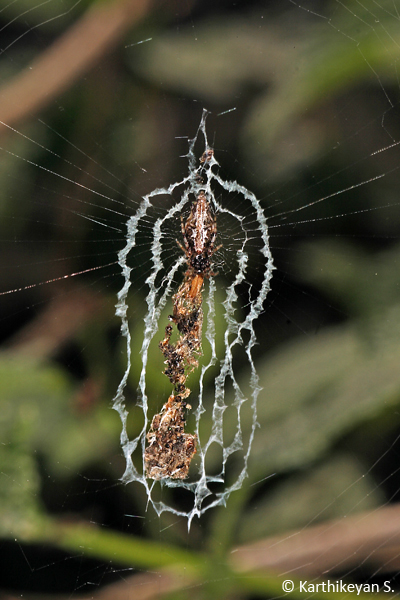
Only much later, when I learnt about the devious ways of these tiny spiders did I start discerning the form of the spider in the midst of the debris! The form and colour of the spider, the way it sits on the web amidst the debris all render the spider ‘invisible’ to an untrained eye! In an earlier article on Camouflage, I had showcased examples of various organisms blending in with their background. Here, the spider creates a situation to render its form inconspicuous. One wonders how the spider knows to do this!
The white silk that the spider weaves into its web is called the stabilimentum. As to why the Debris Orb Weaver and a few other spiders incorporate a stabilimentum in their webs is still debated. There are no conclusive answers yet.
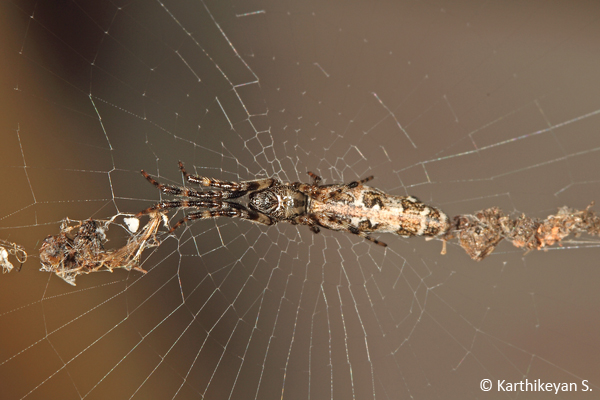
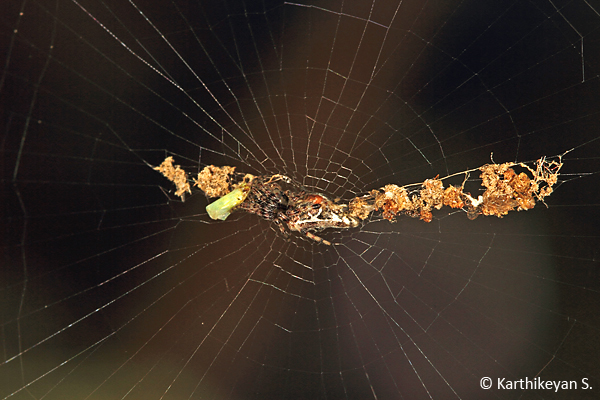
Let us come back to the current web and its inhabitant. The position of the web and the manner in which the spider was resting on the web were just ideal for photography. I sat down and got some satisfactory pictures. The spider itself with all its legs drawn close to the body looked just like a mass of debris that was next to it.
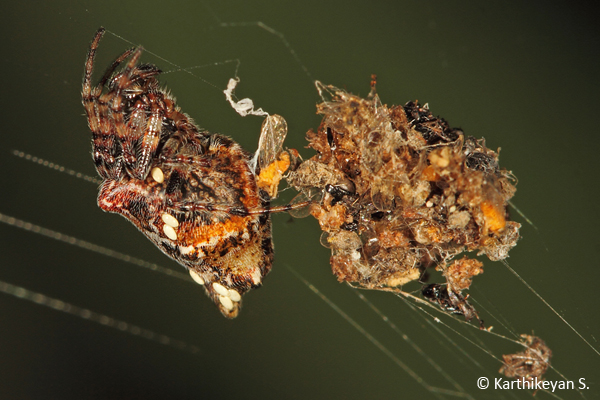
On coming home, I transferred the images and was processing the images when what I saw sent me into a tizzy. I was shocked and surprised. I was also wondering as to how I missed it when photographing the spider. There were several eggs on the spider!
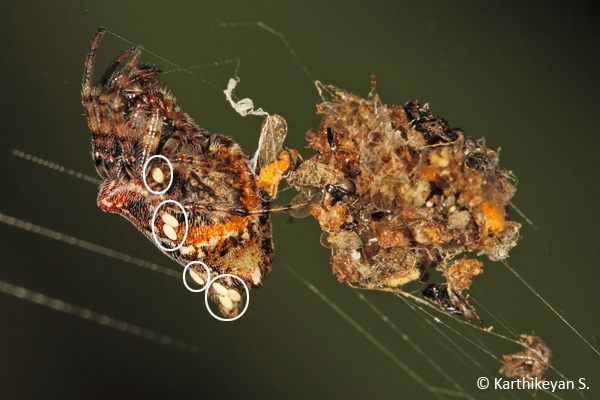
These eggs perhaps belonged to a parasite. My curiosity was so intense that I had to share this with someone. So, I quickly made a call to a friend who studies spiders – Dr. Manju Siliwal – and described the whole thing to her and also sent the picture to her. She in turn sent it to a friend and told me that these could be eggs of a wasp!
The basic question in my mind was answered. But a whole new set of questions raised their heads. How did the wasp lay its eggs on the spider that was suspended in mid air? In spite of the spider being so well camouflaged, how did the wasp locate the spider? Would not the spider move away or avoid the wasp? Or, would the wasp do something to temporarily immobilize the spider?
I may not find answers until I get lucky and witness the whole episode unfurl in front of me. So, as usual, the wait begins!